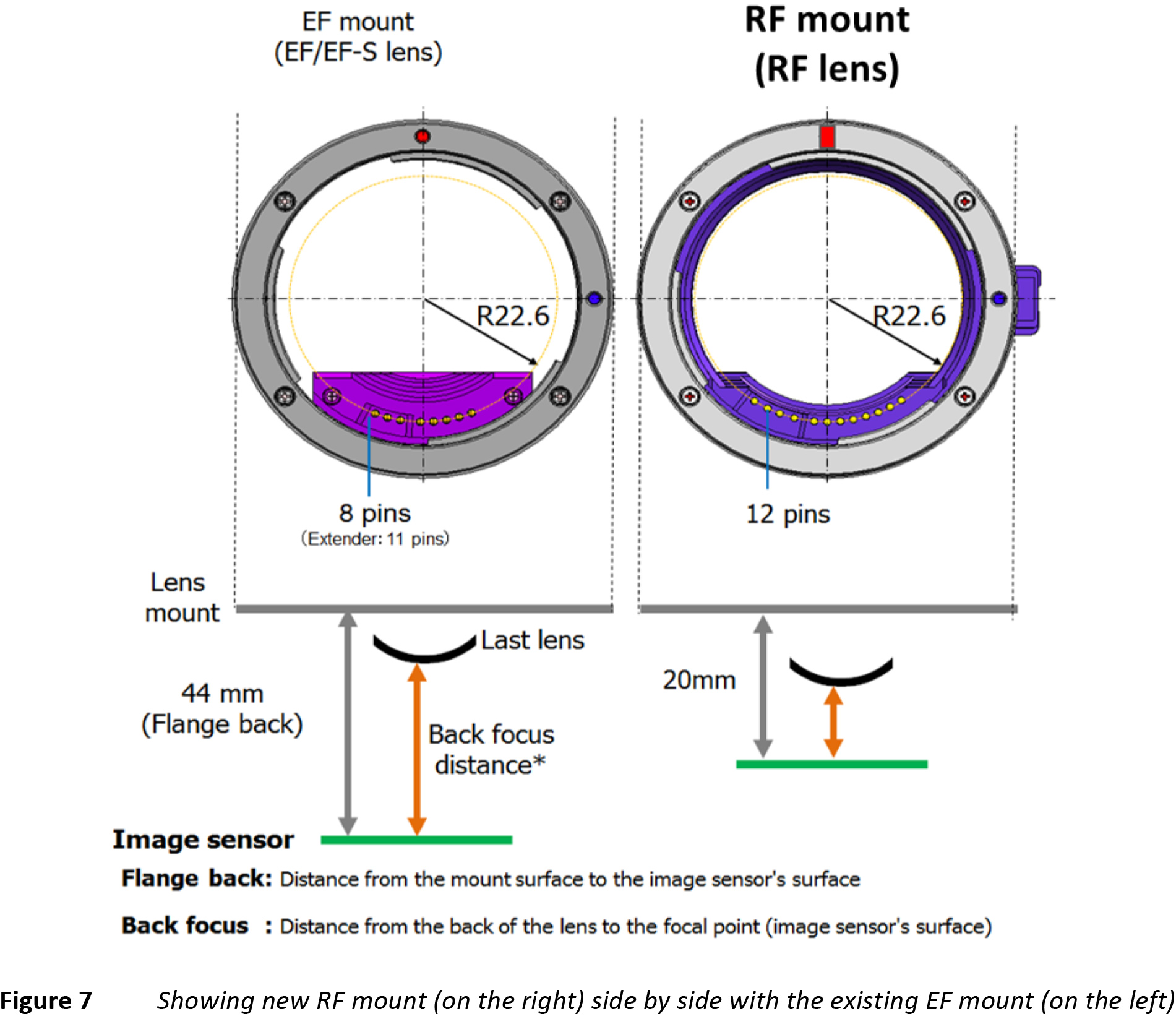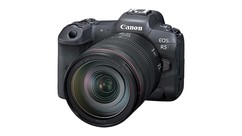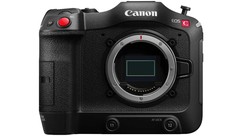Compared to Canon’s EF mount, which uses a 44mm flange focal distance, the RF mount’s is only 20mm, a difference of nearly an inch. This allows for a wide variety of lenses, including of course Canon EF-mount lenses, to be adapted to cameras equipped with the RF-mount. Both mounts share the same large 54mm inner diameter, which easily accommodates full format (36mm x 24mm) sensors.

Image courtesy of Canon USA, from EOS R System White Paper by Larry Thorpe
Beyond allowing for non-RF lenses to be adapted to RF-mount camera bodies, the new mount also enables lens designs that have never been possible before on modern Canon and other cameras. Because the rear-most element in a lens’ design can now be significantly closer to the image sensor, as well as significantly larger, lens designers have the freedom to experiment with a host of new techniques. For example, lenses could be made smaller, with fewer elements. Or, they could be made to a similar size as modern lenses but potentially with faster maximum apertures. Longer focal lengths, for roughly the same size lens, are also possible.
An optics principle known as ‘telecentricity’, where a lens’ entrance or exit pupil is at infinity, relative to image space, allows for the light rays exiting the rear of the lens to be essentially parallel to each other. This allows for more freedom in both lens and image sensor design, since the sensors in digital cameras like to receive light rays as close to on-axis as possible (in contrast to film, which didn’t “care” at what angle a light ray struck the photosensitive emulsion). In layman’s terms, this principle means that being able to use larger pieces of rear glass, and place them closer to the sensor, results in more even overall illumination of the sensor, especially at the edges of the frame.
In addition to the benefits in optical design, the RF mount features an additional four electronic contact points between the lens and the body, now a total of 12 compared to EF mount’s eight. This allows for richer, and more flexible, electronic communication between bodies and lenses. While Canon isn’t saying what might be possible, either now or in the future, with this higher bandwidth between the lens and the body, we’ve already seen the additional of user-assignable stepped control rings to most RF lenses. In compatible camera bodies, the control ring can be assigned to any number of functions including aperture, shutter speed, ISO, and others. The manual focus rings on RF lenses, which are all electronically actuated (at least in Canon’s autofocus lenses), can be customized to allow for a longer rotation, relative to the lens’ size, for more precise manual focusing. The rotation direction can be changed as well, for those used to lenses that focus ‘the other way’. These are just a couple examples of new electronic features enabled by the RF mount. We’re interested to see how Canon may make use of these new capabilities in the future.
What does all of this add up to? We’ve seen better image quality from the new RF glass across the board. Canon’s EF lenses (including their cinema primes and zooms) were already outstanding but the RF lenses we’ve spent time with, such as the 35mm f/1.8 Macro IS STM, 50mm f/1.2L USM, 28-70mm f/2L USM and 15-35 f/2.8L IS USM, all perform just that little bit better. A good example is the 50mm f/1.2L USM — Canon has a long history of ultra-fast primes in this focal length range. However, the limitations of different lens mounts, plus older design and manufacturing processes often limited their ultimate performance ‘wide open’. To ‘clean up’ the effect of, for example, chromatic aberrations or vignetting, users were often advised to ‘stop down a little’. The RF 50mm f/1.2L USM performs near-optimally wide open at f/1.2. It’s astonishing to see an image that is virtually free of color fringing and shading, with sharp corners, at maximum aperture — especially when that maximum is in the rarefied category of ultra-speed.
As more and more RF-based camera bodies come to market, which now includes purpose-built motion cameras from Canon, with the EOS C70, and the RED KOMODO, we’re just starting to see what’s possible with Canon’s new lens mount. We have a feeling this is just the tip of the iceberg and that the best is yet to come. The advantages of the RF mount are numerous: hassle-free adaptation of legacy EF lenses as well as nearly any other lens for still or motion photography from the last 100 years; new opportunities in lens design yielding smaller, faster lenses with enhanced image quality; and a more sophisticated level of electronic communication, enabling new synergies between lens and body. As good as these “early” RF lenses are, we wonder what the RF lenses of five, ten, or more, years from now will be like? It will be fascinating to watch this new mount grow.


















AbelCine encourages comments on our blog posts, as long as they are relevant and respectful in tone. To further professional dialog, we strongly encourage the use of real names. We reserve the right to remove any comments that violate our comment policy.
AbelCine publishes this blog as a free educational resource, and anyone may read the discussions posted here. However, if you want to join the conversation, please log in or register on our site.
We use Disqus to manage comments on this blog. If you already have a Disqus account registered under the same email as your AbelCine account, you will automatically be logged in when you sign in to our site. If not, please create a free account with Disqus using the same email as your AbelCine account.